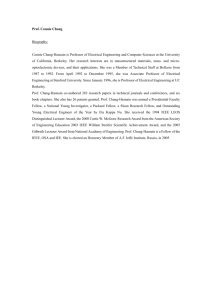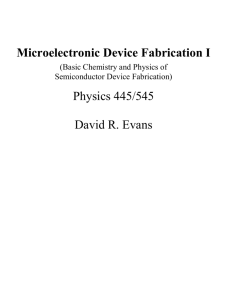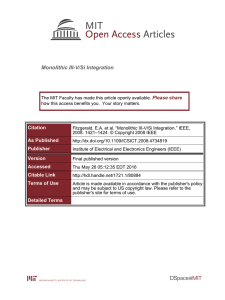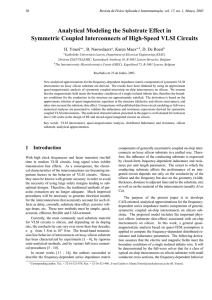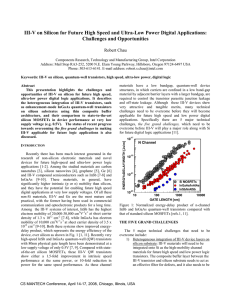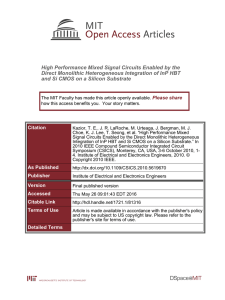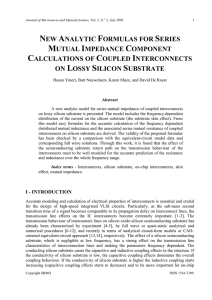III-V Nanopillar-Based Devices on a Silicon Substrate
advertisement
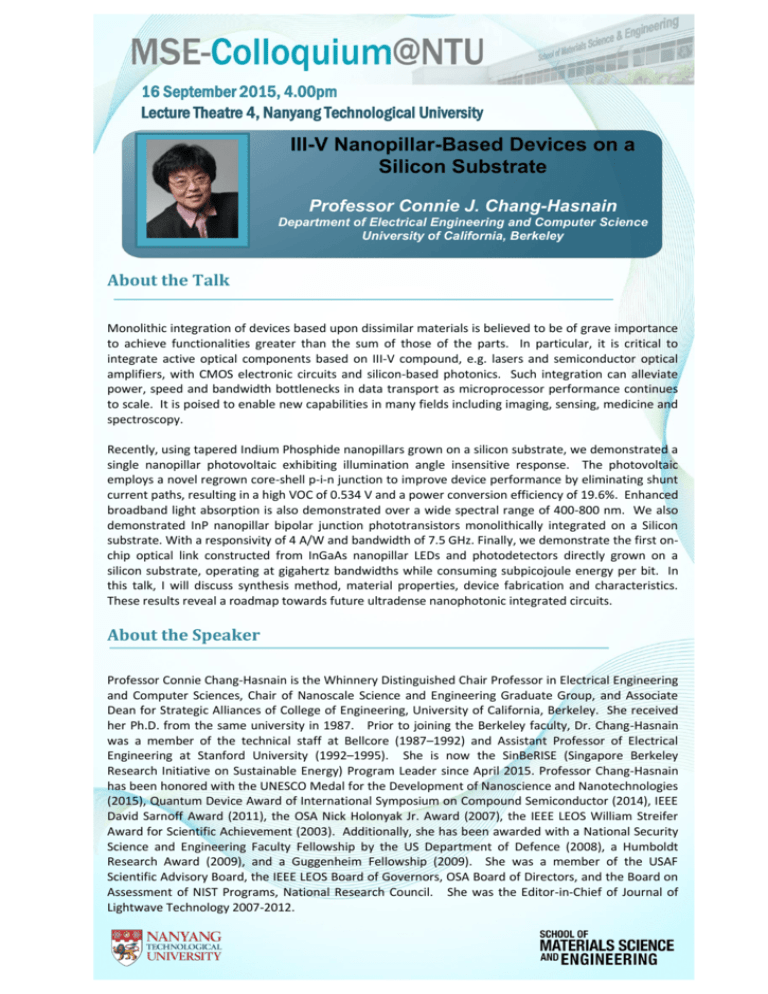
16 September 2015, 4.00pm Lecture Theatre 4, Nanyang Technological University III-V Nanopillar-Based Devices on a Silicon Substrate Professor Connie J. Chang-Hasnain Department of Electrical Engineering and Computer Science University of California, Berkeley About the Talk Monolithic integration of devices based upon dissimilar materials is believed to be of grave importance to achieve functionalities greater than the sum of those of the parts. In particular, it is critical to integrate active optical components based on III-V compound, e.g. lasers and semiconductor optical amplifiers, with CMOS electronic circuits and silicon-based photonics. Such integration can alleviate power, speed and bandwidth bottlenecks in data transport as microprocessor performance continues to scale. It is poised to enable new capabilities in many fields including imaging, sensing, medicine and spectroscopy. Recently, using tapered Indium Phosphide nanopillars grown on a silicon substrate, we demonstrated a single nanopillar photovoltaic exhibiting illumination angle insensitive response. The photovoltaic employs a novel regrown core-shell p-i-n junction to improve device performance by eliminating shunt current paths, resulting in a high VOC of 0.534 V and a power conversion efficiency of 19.6%. Enhanced broadband light absorption is also demonstrated over a wide spectral range of 400-800 nm. We also demonstrated InP nanopillar bipolar junction phototransistors monolithically integrated on a Silicon substrate. With a responsivity of 4 A/W and bandwidth of 7.5 GHz. Finally, we demonstrate the first onchip optical link constructed from InGaAs nanopillar LEDs and photodetectors directly grown on a silicon substrate, operating at gigahertz bandwidths while consuming subpicojoule energy per bit. In this talk, I will discuss synthesis method, material properties, device fabrication and characteristics. These results reveal a roadmap towards future ultradense nanophotonic integrated circuits. About the Speaker Professor Connie Chang-Hasnain is the Whinnery Distinguished Chair Professor in Electrical Engineering and Computer Sciences, Chair of Nanoscale Science and Engineering Graduate Group, and Associate Dean for Strategic Alliances of College of Engineering, University of California, Berkeley. She received her Ph.D. from the same university in 1987. Prior to joining the Berkeley faculty, Dr. Chang-Hasnain was a member of the technical staff at Bellcore (1987–1992) and Assistant Professor of Electrical Engineering at Stanford University (1992–1995). She is now the SinBeRISE (Singapore Berkeley Research Initiative on Sustainable Energy) Program Leader since April 2015. Professor Chang-Hasnain has been honored with the UNESCO Medal for the Development of Nanoscience and Nanotechnologies (2015), Quantum Device Award of International Symposium on Compound Semiconductor (2014), IEEE David Sarnoff Award (2011), the OSA Nick Holonyak Jr. Award (2007), the IEEE LEOS William Streifer Award for Scientific Achievement (2003). Additionally, she has been awarded with a National Security Science and Engineering Faculty Fellowship by the US Department of Defence (2008), a Humboldt Research Award (2009), and a Guggenheim Fellowship (2009). She was a member of the USAF Scientific Advisory Board, the IEEE LEOS Board of Governors, OSA Board of Directors, and the Board on Assessment of NIST Programs, National Research Council. She was the Editor-in-Chief of Journal of Lightwave Technology 2007-2012.
